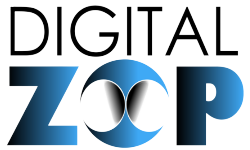The Comprehensive Digital Marketing Strategy: A Guide to Boost Your Online Presence
The world of digital marketing can be overwhelming for businesses, especially those who are just starting out. With so many channels and strategies to choose from, it can be challenging to know where to focus your efforts. That’s why it’s crucial to have a comprehensive digital marketing strategy in place. A well-designed strategy can help you reach your target audience, increase brand awareness, and drive traffic to your website.
In this guide, we’ll walk you through the key components of a comprehensive digital marketing strategy, so you can take your business to the next level.
The Importance of Understanding Your Target Audience
The first step in creating a comprehensive digital marketing strategy is to understand your target audience. Who are they? What are their pain points and challenges? What motivates them to take action?
By answering these questions, you can create a more effective marketing strategy that speaks directly to your target audience’s needs and interests.

To understand your target audience, you can conduct market research, analyze customer data, and gather feedback from social media channels and online reviews.
Once you have a clear understanding of your target audience, you can create buyer personas that represent your ideal customer. This will help you tailor your marketing messages and content to their specific needs and preferences.
Developing a Content Strategy
Content marketing is a critical component of a comprehensive digital marketing strategy. By creating valuable and relevant content, you can establish authority, build brand awareness, and drive traffic to your website.

To develop a content strategy, you need to first identify the types of content that resonate with your target audience. This could include blog posts, videos, infographics, social media posts, and more.
You should also consider the topics and themes that your target audience is interested in. What questions do they have? What problems do they need to solve? By addressing these issues in your content, you can establish yourself as a thought leader in your industry and attract more traffic to your website.
Search Engine Optimization (SEO)
Search engine optimization (SEO) is the process of optimizing your website and content to improve your search engine rankings. When your website ranks higher in search engine results pages (SERPs), you’re more likely to attract organic traffic to your site.
To optimize your website for search engines, you need to focus on a few key areas:
- On-page optimization: This involves optimizing your website’s content and meta tags to include relevant keywords and phrases.
- Technical optimization: This involves improving your website’s loading speed, mobile-friendliness, and overall user experience.
- Off-page optimization: This involves building high-quality backlinks to your website from other reputable websites.
By focusing on these areas, you can improve your search engine rankings and attract more traffic to your website.
Paid Advertising
While organic traffic is important, it can take time to see results from SEO efforts. That’s where paid advertising comes in.
Paid advertising involves running ads on various digital platforms such as Google, Facebook, and Instagram. By targeting specific demographics and interests, you can reach your target audience and drive traffic to your website.
There are several types of paid advertising you can use, including:
- Pay-per-click (PPC) advertising: This involves paying for each click your ad receives on search engines like Google and Bing.
- Display advertising: This involves displaying ads on other websites and platforms to reach a broader audience.
- Social media advertising: This involves running ads on social media platforms like Facebook, Instagram, and Twitter.
By using paid advertising, you can supplement your organic traffic efforts and reach a broader audience in less time.
Email Marketing
Email marketing is a highly effective way to reach your target audience and nurture leads into customers. By sending targeted and personalized emails, you can build relationships with your subscribers and encourage them to take action.
To create an effective email marketing strategy, you need to first build a high-quality email list. You can do this by offering valuable content, such as ebooks or webinars, in exchange for subscribers’ contact information.
Once you have a list of subscribers, you can segment them based on their interests and behaviors. This will allow you to send more targeted and personalized emails that are more likely to resonate with your audience.
Some common types of emails include newsletters, promotional emails, and abandoned cart emails. By testing different types of emails and analyzing your results, you can determine which types of emails are most effective at driving conversions and revenue.
Social Media Marketing
Social media marketing involves using social media platforms like Facebook, Twitter, and LinkedIn to reach and engage with your target audience. By creating and sharing valuable content, you can establish a strong presence on social media and build relationships with your followers.
To create an effective social media marketing strategy, you need to first identify the platforms that your target audience uses the most. Once you’ve identified these platforms, you can create a content calendar and schedule your posts in advance.
Some common types of social media content include blog posts, infographics, videos, and memes. By experimenting with different types of content and analyzing your results, you can determine which types of content are most effective at engaging your audience and driving traffic to your website.
Comprehensive Digital Marketing Strategy
A comprehensive digital marketing strategy brings together all of these components into a cohesive plan that can help you achieve your business goals.
To create a comprehensive digital marketing strategy, you need to first define your goals and objectives. What do you want to achieve with your marketing efforts? Do you want to increase website traffic, generate leads, or drive sales?
Once you’ve defined your goals, you can create a plan that incorporates all of the key components we’ve discussed. This might include developing a content strategy, optimizing your website for search engines, running paid advertising campaigns, and engaging with your audience on social media.
By bringing together all of these components, you can create a comprehensive digital marketing strategy that is tailored to your business’s unique needs and goals.
FAQs
Q: What is a comprehensive digital marketing strategy?
A: A comprehensive digital marketing strategy is a plan that incorporates all of the key components of digital marketing, including content marketing, SEO, paid advertising, email marketing, and social media marketing.
Q: Why is it important to have a comprehensive digital marketing strategy?
A: A comprehensive digital marketing strategy can help you reach your target audience, increase brand awareness, and drive traffic to your website. By bringing together all of the key components of digital marketing, you can create a cohesive plan that is tailored to your business’s unique needs and goals.
Q: How do I develop a content strategy?
A: To develop a content strategy, you need to first identify the types of content that resonate with your target audience. This could include blog posts, videos, infographics, social media posts, and more. You should also consider the topics and themes that your target audience is interested in.
Q: What is SEO?
A: SEO stands for search engine optimization. It is the process of optimizing your website and content to improve your search engine rankings.
Q: What is paid advertising?
A: Paid advertising involves running ads on various digital platforms such as Google, Facebook, and Instagram. By targeting specific demographics and interests, you can reach your target audience and drive traffic to your website.
Q: What is email marketing?
A: Email marketing is a highly effective way to reach your target audience and nurture leads into customers. By sending targeted and personalized emails, you can build relationships with your subscribers and encourage them to take action.
Conclusion
In conclusion, a comprehensive digital marketing strategy is essential for any business that wants to succeed in today’s digital landscape. By bringing together all of the key components of digital marketing, you can create a cohesive plan that is tailored to your business’s unique needs and goals.
To develop a comprehensive digital marketing strategy, you need to first define your goals and objectives. This will help you determine which components of digital marketing are most important for your business. Once you’ve identified your goals, you can create a plan that incorporates content marketing, SEO, paid advertising, email marketing, and social media marketing.
When developing your strategy, it’s important to remember that digital marketing is an ongoing process. You need to continually test and optimize your efforts to ensure that you are achieving the best possible results. By analyzing your results and making adjustments as needed, you can improve your digital marketing strategy over time and achieve greater success.
In today’s digital world, a comprehensive digital marketing strategy is more important than ever. By using all of the key components of digital marketing, you can reach your target audience, drive traffic to your website, and achieve your business goals.




